In 1961, the US Navy (USN) began looking for a new light bomber to replace the Douglas A-4 Skyhawk.
There was a general trend toward expensive supersonic aircraft in the military at the time, with the key word being ‘expensive’. Swimming against the current, the Navy wanted a somewhat simpler, austere design.
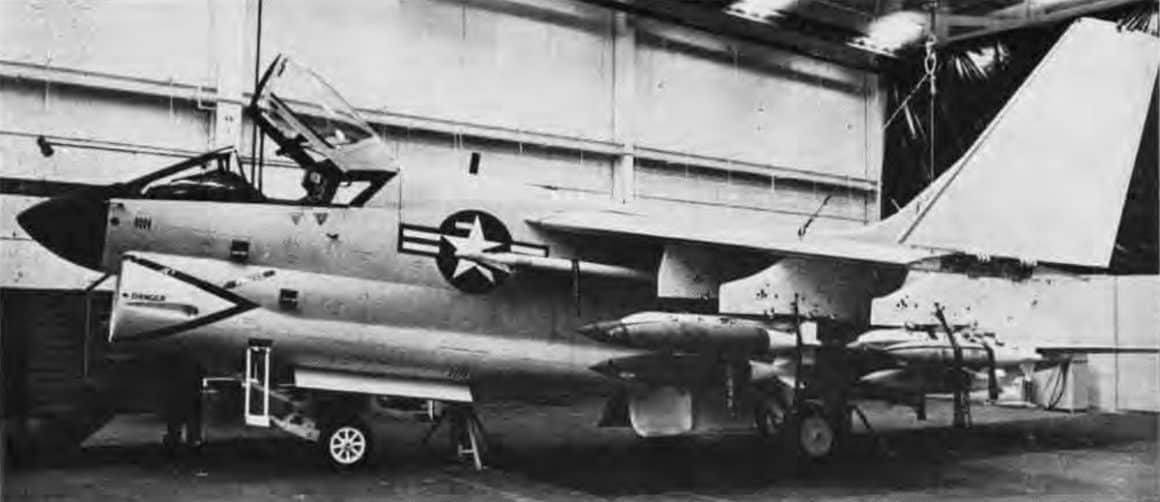
In 1964, the USN accepted a bid from Ling-Temco-Vought (LTV) for what became the A-7 Corsair II. Simple it was, and simple meant not only cheaper, but a fairly quick development period as well.
The first A-7 flew in 1965 and development proceeded apace. So much so that the end of 1967 would see the US Navy’s first deployment of the A-7 in Vietnam.
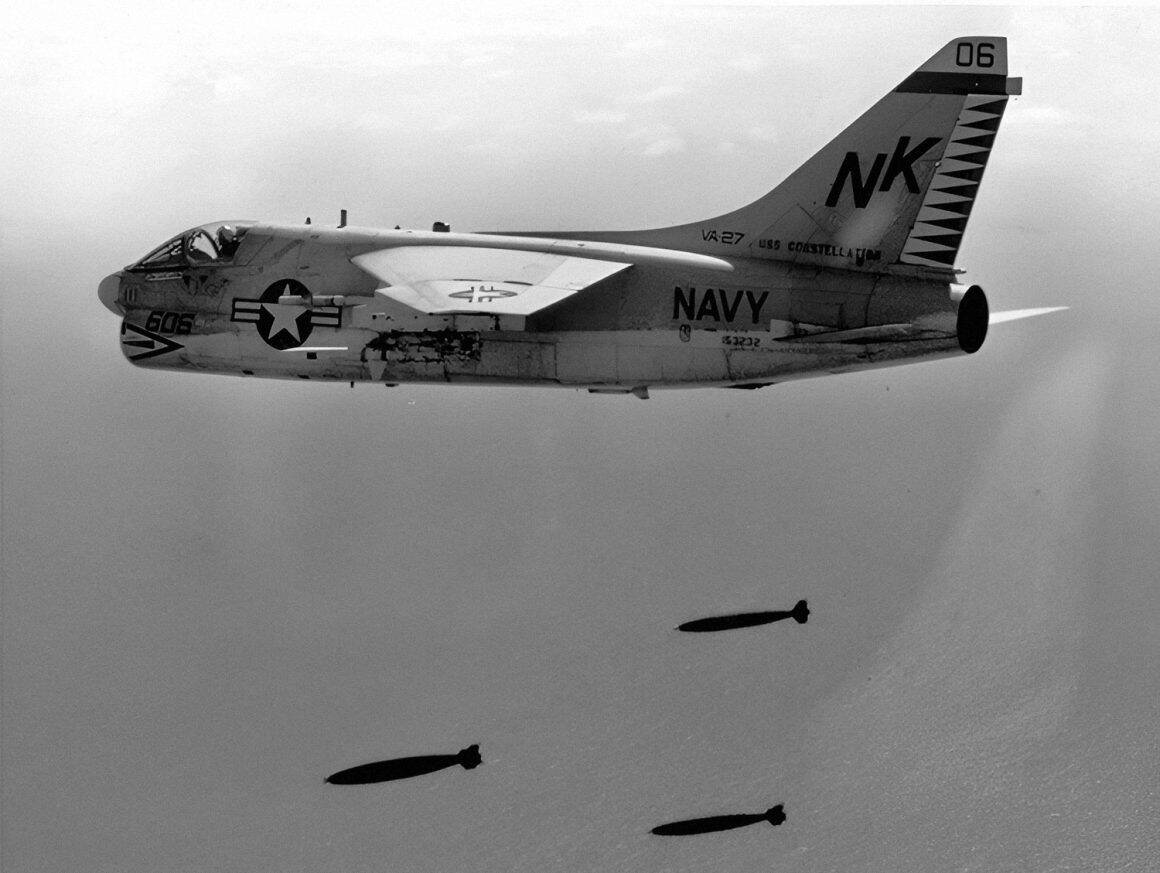
The A-7 Enters U.S. Navy Service
In 1966, the A-7 entered service with the U.S. Navy, and two fleet readiness squadrons received the first A-7As. VA-174 Hellrazors at Cecil Field, Florida, on the East Coast would train crews for the Atlantic Fleet squadrons. VA-122 Flying Eagles at NAS Lemoore, California, would do the same for Pacific Fleet outfits on the West Coast.

The first front line U.S. Navy outfit to become operational on the A-7 was Attack Squadron 147 (VA-147) Argonauts, on the West Coast.
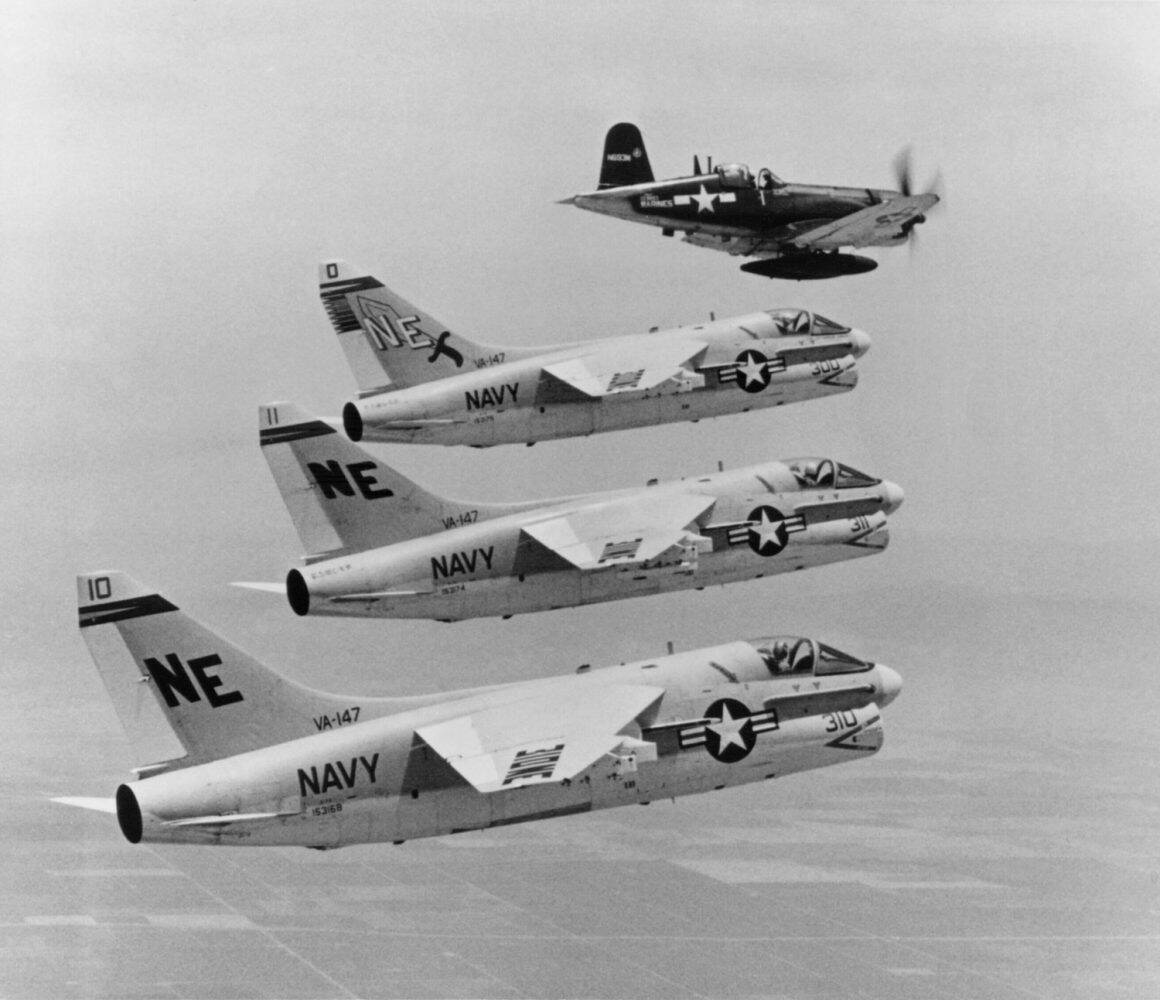
US Navy Deploys the A-7 in Vietnam
VA-147 was also the first USN squadron to enter combat in Southeast Asia (SEA). The outfit embarked on USS Ranger (CVA-61) as part of Attack Carrier Air Wing 2 (CVW-2) in September of 1967. Combat operations commenced in December.
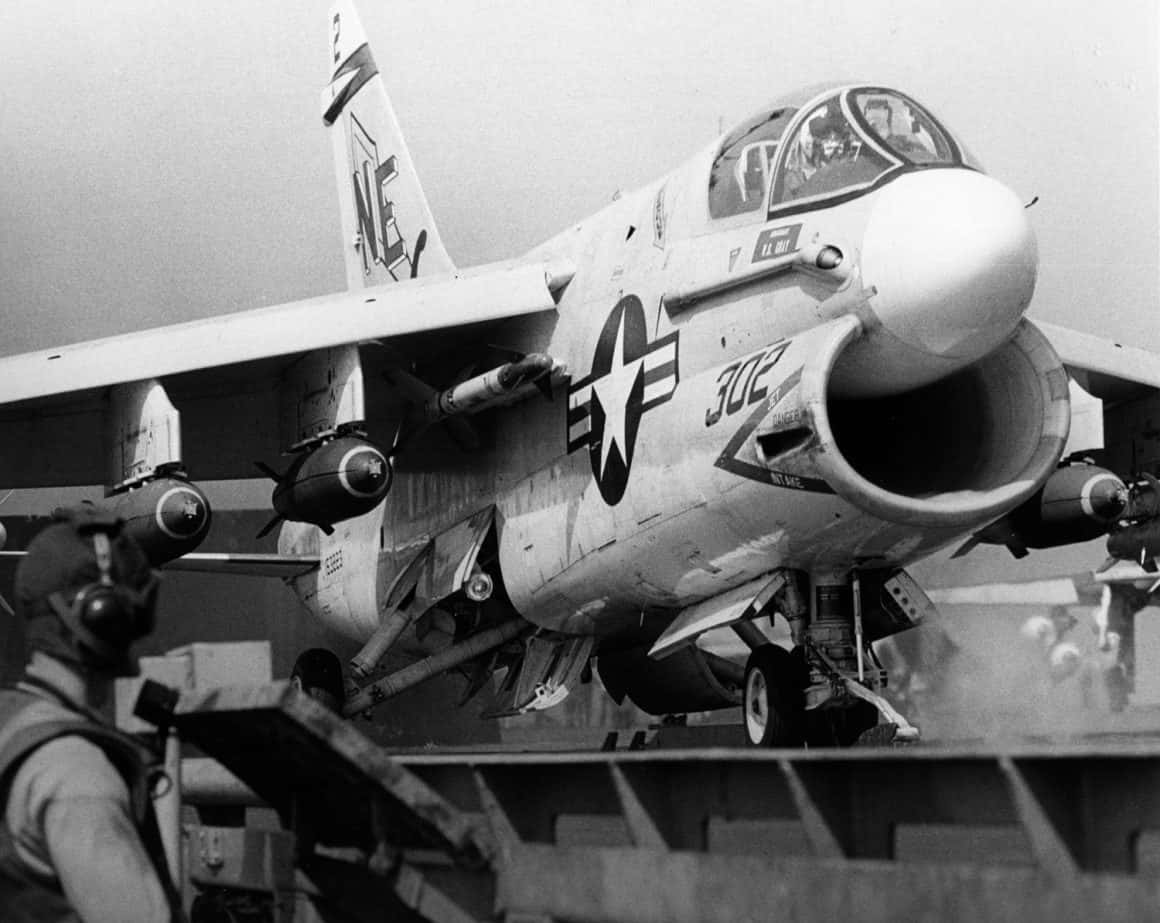
Navy squadrons flying the A-7 in Vietnam soon established a fine combat record. With a greater range than the A-4 and almost twice the payload, the A-7 became a veritable workhorse for the Navy.
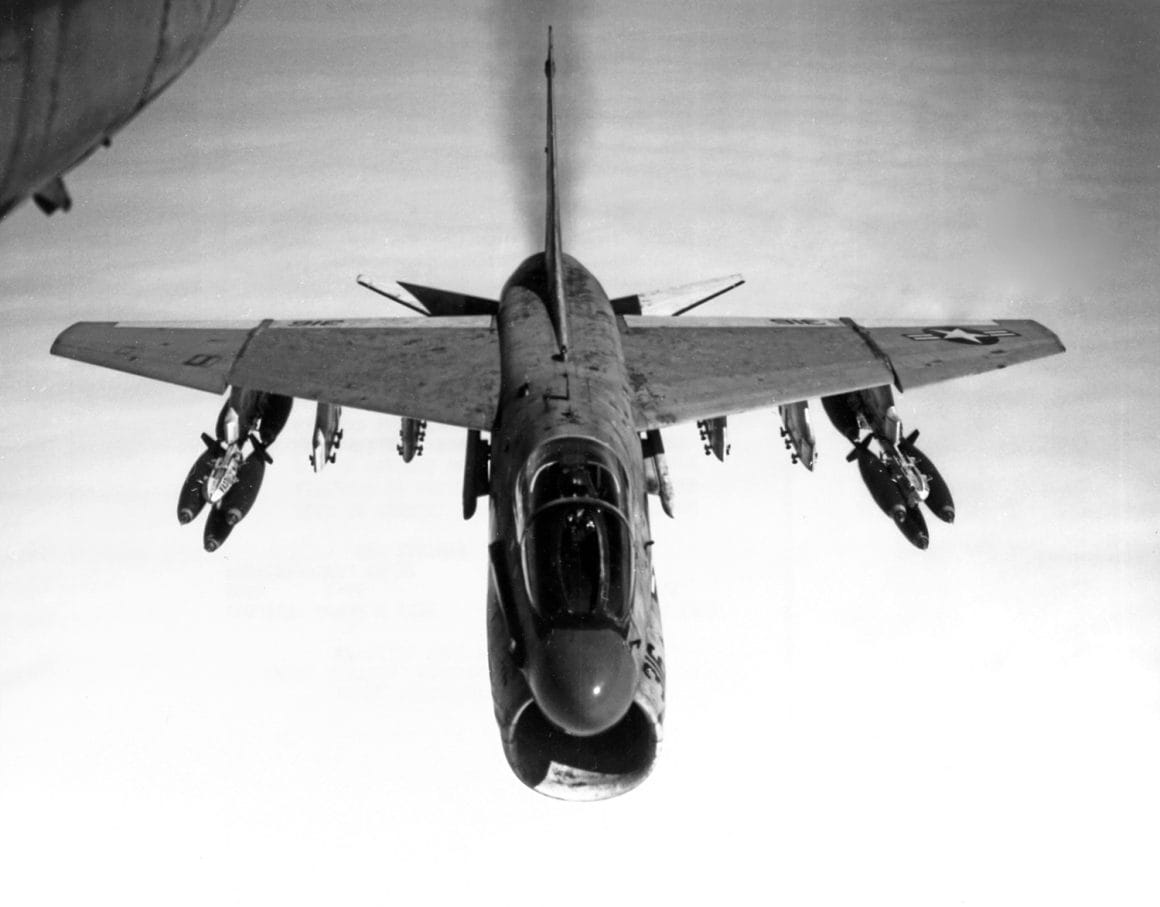
The A-7 flew close air support missions and made high altitude level bombing runs. A-7s also played the Suppression of Enemy Air Defenses (SEAD) game, flying ‘Iron Hand’ missions against radar-guided air defenses.
Another role it filled, one rather placid in nature, was that of aerial refueling. Equipped with underwing ‘buddy’ stores, many US Navy aircraft types, including the A-7, can act as tankers for other birds in the air wing.

Bridge Busting With the A-7 in Vietnam
As a response to North Vietnam’s invasion of South Vietnam in March of 1972, Operation Linebacker began in May of 1972. Its intention was to disrupt the flow of supplies from the North to the South, in an attempt to halt the offensive.
Roads, bridges, and supply points were to be relentlessly pounded from the air. On 10 May, one of the most prominent targets was the Hai Duong rail and highway bridge, a major link between Hanoi and Haiphong.
The job of destroying the bridge fell to Attack Carrier Air Wing 11 (CVW-11) from the USS Kitty Hawk (CVA-63). This photo was taken by a rearward strike camera mounted underneath an A-7E of VA-195 Dambusters, flown by Lieutenant Mike ‘Baby’ Ruth.
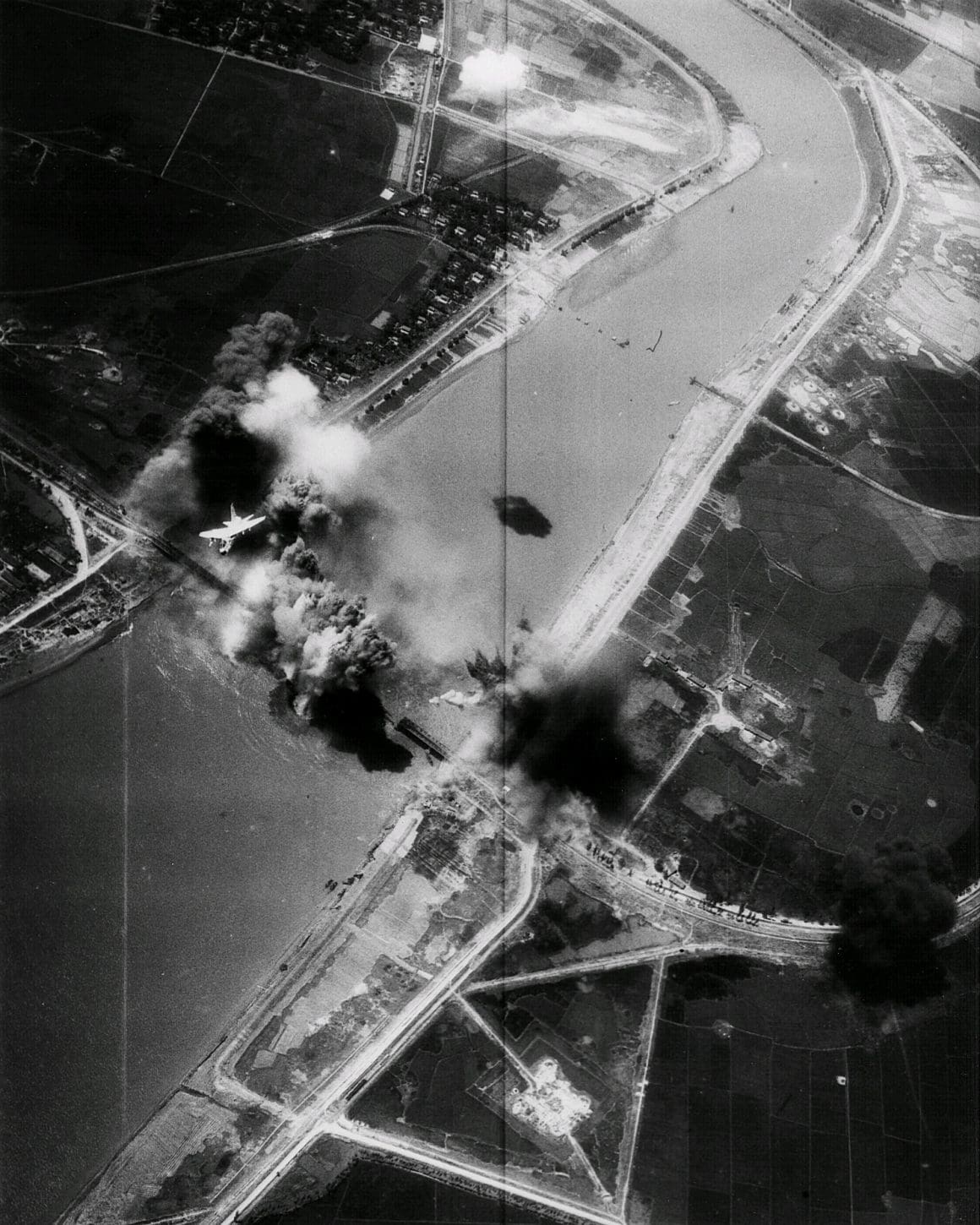
Hunting SAMs With the A-7 in Vietnam
Perhaps the most dangerous of all the missions flown by the A-7 in Vietnam were of the SEAD variety. Operation Iron Hand was a joint effort by the USAF and the USN to destroy enemy radar-guided air defenses.

The idea was to fly ahead of a strike package and play bait, as it were. Attract attention from an enemy radar-guided surface-to-air missile (SAM) or anti-aircraft artillery (AAA) battery. Wait for the radars to switch on and track you. Locate the radars and weapons batteries, then take ’em out.
Weapons used for this purpose were a mix of anti-radiation missiles as well as a variety of ‘dumb’ bombs. Early on, the missiles were AGM-45 Shrikes, later augmented with the AGM-76 Falcon. Regular ‘ole iron bombs were used, but Rockeye cluster bombs were preferred by many crews.
‘Twas highly dangerous, to put it mildly. Many of the A-7 losses suffered were among the SAM hunters.
This photo shows an A-7 from VA-93 Blue Blazers about to launch for an Iron Hand sortie, She’s armed with four Shrikes and two Rockeyes.

Flying Combat Can Be Dangerous
Yeah, that’s an obvious one. But here’s an illustration of exactly how dangerous it could be.
On 14 September 1968, VA-27 Royal Maces flew a mission in support of the campaign against the ‘ole Chi Minh Trail. That day, the target was enemy shipping in the southern Panhandle area.
The A-7A flown by the squadron’s commanding officer, Commander George Pappas, took a hit from AAA, setting the starboard wing ablaze. He headed back toward home, the USS Constellation (CVA-64), and had gone feet wet when the fire worsened.

Weighing the odds, Pappas decided to turn toward Da Nang, which was nearer, and make an emergency landing there. Miraculously, he was able to make it to the base and was on his landing approach, but had trouble controlling the jet.
Pappas wound up riding the bang seat while over the runway. The jet came down hard, veered off, and headed straight for a hangar, coming to rest half in and out of the building. Fire crews extinguished the blaze, averting a catastrophe.
The jet was a write-off, and Pappas suffered minor injuries. But it could have been much worse. This was a relatively rare happy-ish ending. About 54 Navy A-7s were lost in combat, and many pilots were not as fortunate as Commander Pappas.
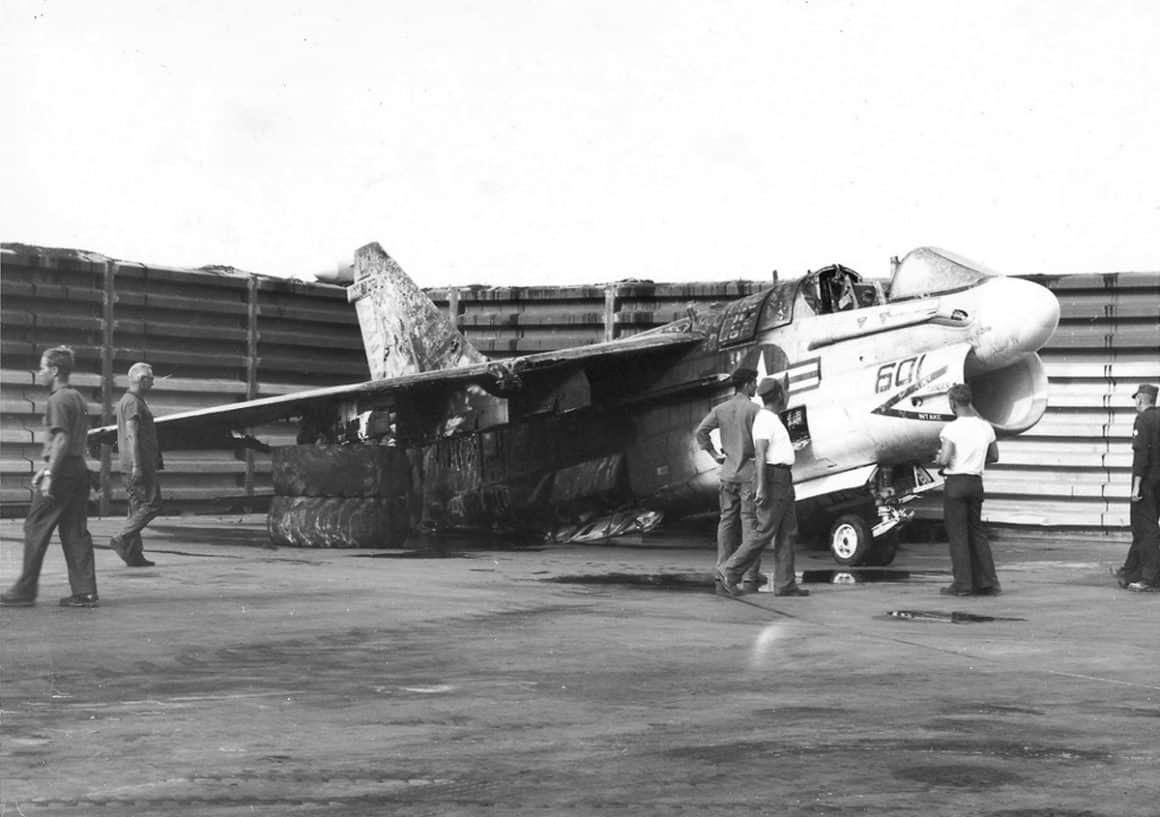
An Assessment of the U.S. Navy’s A-7 in Vietnam
The war in Vietnam was a failure for the USA as a whole. That much is true. But in failure, there are often successes, and the LTV A-7 Corsair II proved its worth in Vietnam.

The type flew somewhere in the neighborhood of 97,000 combat sorties with the USN, constituting a high percentage of the overall sortie count. In Operation Linebacker alone, the A-7 flew 60% of all USN offensive sorties.
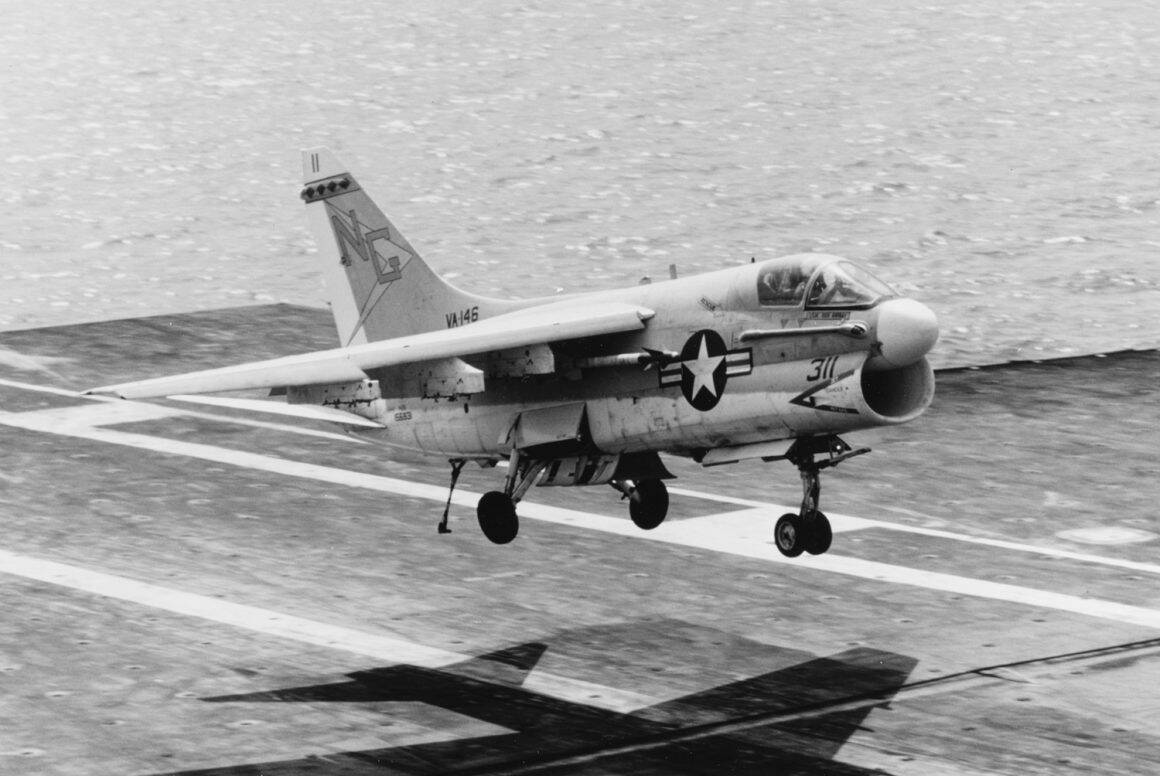
In establishing this combat record, the Short Little Ugly Fella’s reputation as a first-class bomb truck had been firmly cemented in history.
